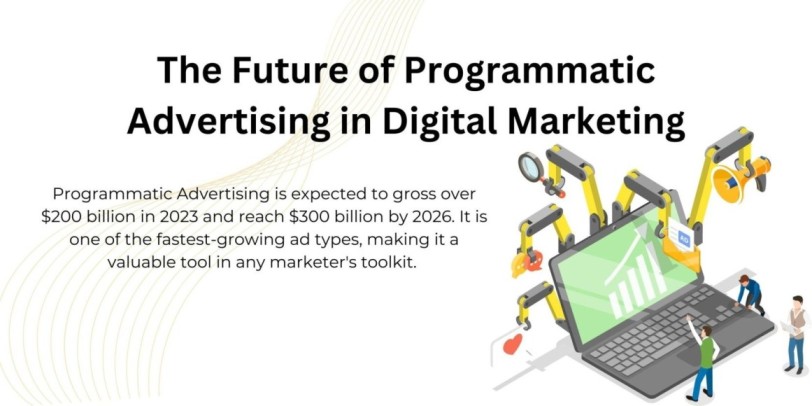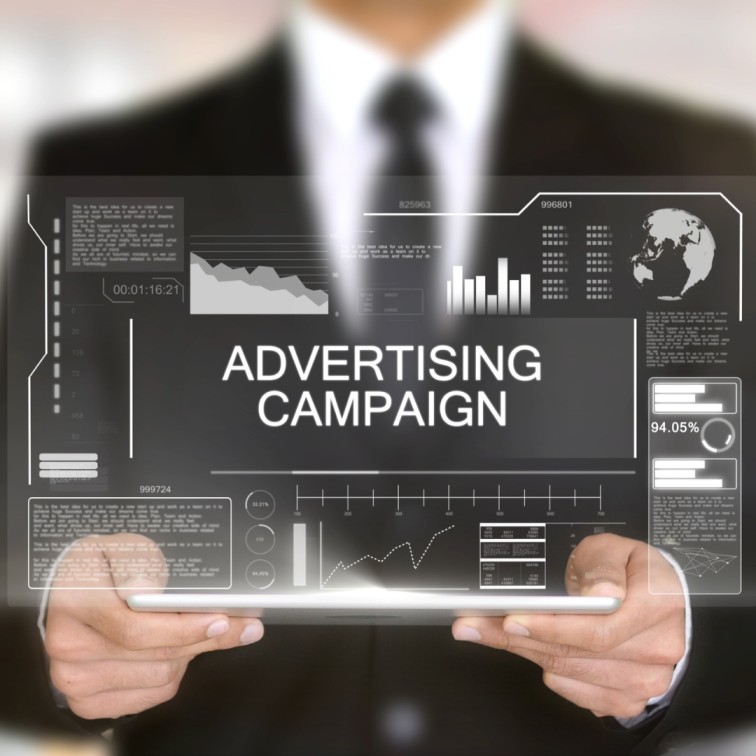
In India, programmatic advertising, the latest development in the digital advertising scene, is now the talk of the town, and the way brands communicate with their customers has completely changed. Programmatic advertising is one of the top areas of digital marketing, as it can revolutionize how ads are bought and targeted, affect marketing approach in general, and bring forth many prospective opportunities.
According to forecasts, programmatic advertising is expected to gross over $200 billion in 2023 and reach $300 billion by 2026. It is one of the fastest-growing advertising types, making it a valuable tool in any marketer’s toolkit.
The Indian digital space has undergone a revolutionary transformation in the last few years due to growing internet penetration, smartphone use, and altering consumer patterns. Programmatic advertising, which uses a vast pool of digital audiences nationwide, has become more popular since this change.
Programmatic advertising allows advertisers to use data and technology to target specific audience segments in real-time, optimizing ad placements across many digital platforms. This results-oriented approach, in turn, allows marketers to deliver the right message at the right time to reach their target consumers, prompting them to engage and respond to their calls to action.
The advertising plan to be successfully implemented into programmatic advertising is based on the basic knowledge of the channel. Keep on reading for a conceptual idea of advertising programmatic and its importance to your business to be enjoyed.
What is Programmatic Advertising?
Programmatic advertising is a way of buying and selling space of digital ads using automated systems and technology platforms that use algorithms. Displacing the hands-on process of traditional negotiations and placing manual ads with real-time bidding (RTB) systems and machine learning algorithms to purchase ad inventory is programmatic advertising.
Imagine running a lemonade stand, but instead of yelling for customers on the street corner, you have a tireless helper.
- This helper (programmatic advertising) uses a megaphone (software and programs) to broadcast your message (ads) across the whole neighbourhood (the web).
- Instead of going door-to-door asking for permission to sell (manual negotiations), your helper finds the best spots with the most foot traffic (ad space) and uses a super-fast auction (real-time bidding) to grab them for the best price.
- This will save you time and allow you to buy the best lemonade stands (ad space) at a discount!
- Your helper tracks who’s buying your lemonade (ad performance) so you can adjust your recipe (ad content) for even more success!
Here’s how programmatic advertising works:
- Advertisers use programmatic platforms to set up campaigns with specific targeting criteria, such as demographics, interests, and browsing behaviour of the target audience.
- When a user visits a website or app with available ad space, the space is auctioned in real time on ad exchanges.
- Advertisers bid on this ad space based on the relevance of their ad to the user and their willingness to pay. This bidding process usually happens within milliseconds.
- The highest bidder’s ad is then displayed to the user.

Benefits of programmatic advertising
Let’s first discover why programmatic is gaining so much popularity. Then, we’ll examine how digital marketing agencies get significant benefit from it:
- Finds more people: Programmatic reaches a broader audience than big platforms because it works across many websites, not just a few.
- Saves your money: It’s a more cost-effective way to advertise than other options.
- Targets the right people: It can show your ads to people more likely to be interested in your product based on their browsing habits and other information.
- Goes beyond banners: You can use creative ad formats like videos and interactive elements to grab attention.
Impact of Programmatic Advertising on Digital Marketing
Programmatic advertising has significantly impacted digital marketing strategies in several ways:
Increased Efficiency and Targeting:
- Automates tedious tasks: Programmatic systems automate the time-consuming process of buying ad space, allowing marketers to focus on strategy and creative content.
- Laser focus on target audience: Advanced targeting capabilities enable marketers to reach specific demographics and interests, maximizing the impact of their ad expenditure.
Improved Performance and Measurement:
- Real-time optimization: Algorithms continuously examine campaign data, automatically changing bids and placements to improve performance.
- Detailed reporting and insights: Programmatic platforms deliver detailed data on ad performance, enabling marketers to calculate ROI and make data-driven decisions.
Greater Transparency and Control:
- Reduced ad fraud: Reputable platforms include fraud detection tools to ensure your spending is spent on genuine impressions.
- Greater budget control: Marketers can set specific budgets and monitor spending in real-time, tailoring campaigns for optimal return.
Overall Impact:
- Increased campaign effectiveness: Programmatic advertising enables more focused and data-driven campaigns, increasing conversion rates and brand recognition.
- Flexibility and Scalability: Campaigns can be quickly scaled up or down based on budget and goals, giving advertisers additional flexibility.
- Omnichannel Marketing: Programmatic advertising can be employed across several channels, including display, mobile, video, and even traditional media, to create a more integrated marketing experience.
Nevertheless, it should be noted that other means must perform better than programmatic advertising. Marketers still have to invest in:
- High-quality creative assets: Eye-catching images and captivating ad language are essential for attracting attention.
- Strategic planning: Clear goals, target audiences, and money allocation are critical to success.
- Data analysis skills: Understanding campaign data and applying it to maximize performance is critical to leveraging the benefits of programmatic advertising.
In conclusion, programmatic advertising has emerged as a driving force in India’s digital marketing landscape, offering marketers unparalleled opportunities to reach and engage their target customers precisely and efficiently. Leveraging data, digital technologies specifically, and automation provides companies with the conditions for innovation and development enablement, allowing them to create new opportunities in a continuously changing ecosystem.


